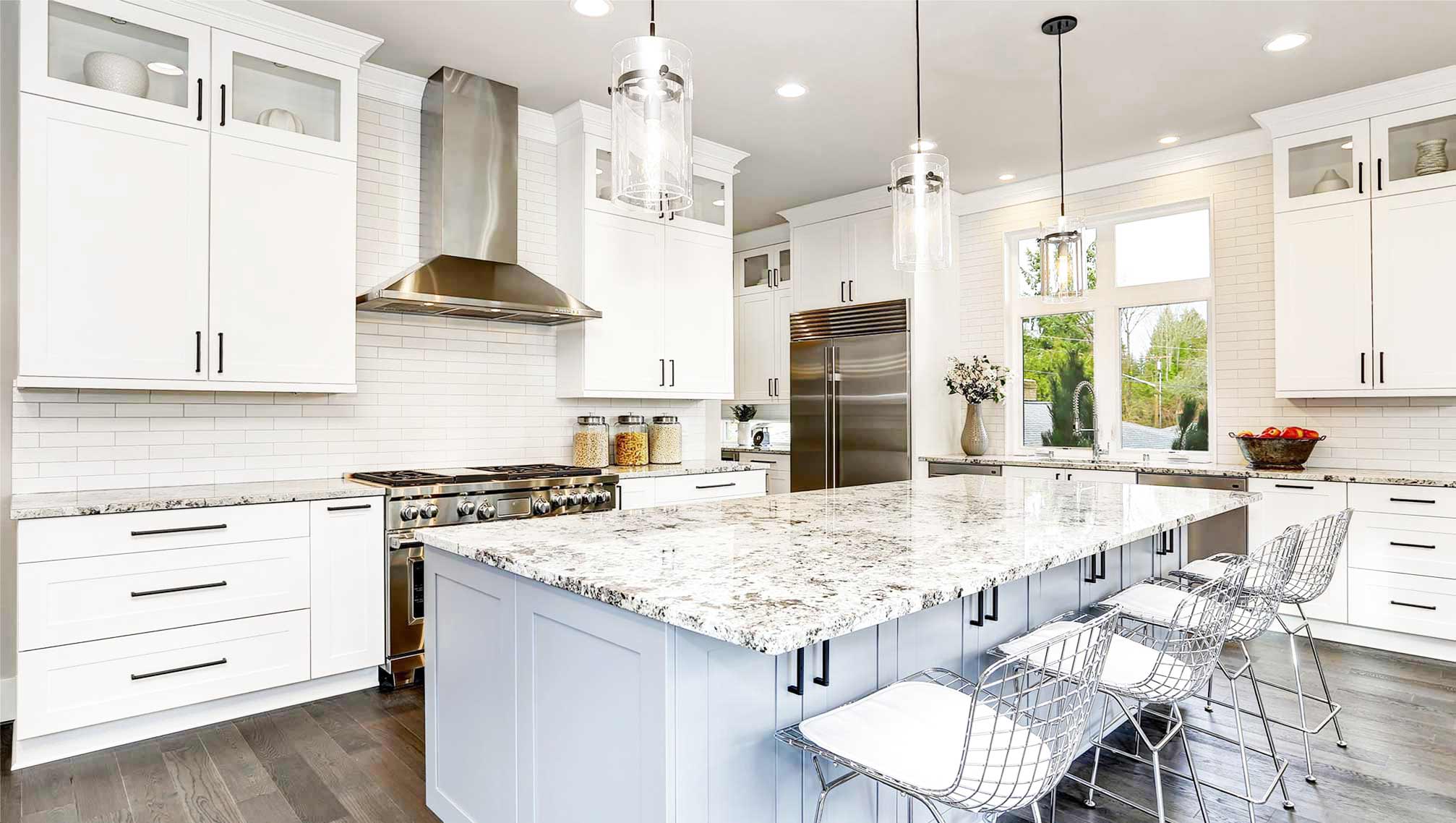I have a dog, his name is Bear, yes – Bear the Dog.
He is considered our first born, and not a day goes by that I don’t talk to him like he’s a human. In fact, I believe that any day now, he’s going to start talking back, in full articulate sentences.
Okay, maybe that’s a little crazy.
Renters are no different. If they have a loved pet, they will exclusively rent properties that allow animals. The pet is understandably part of the family.
Pet Owners are every where
According to the American Pet Products Association’s (APPA) National Pet Owners Survey, Americans now own approximately 83.3 million dogs and 95.6 million cats.
That translates into nearly 50 percent of homeowners owning at least one dog and more than 45 percent owning at least one cat.
Businesses are Embracing Pets
Between local “Yappy hours” at bars, luxury hotel pet packages, and the rise of natural dog food stores, American businesses have gone paws-itively pet crazy!
Today, businesses realize that by discriminating against pet owners, they could be alienating nearly half of their potential customer base, which is an important lesson for you as a property manager.
Follow the Leader
The image of pet-friendly hotels in the past wasn’t always the greatest. They tended to be lower end properties. Nowadays, however, luxury hotels such as the boutique Kimpton brand, not only allows pets, but they welcome them. Their pet policy is simple.
We welcome any pet, regardless of size, weight, or breed for zero fees or deposits at every Kimpton Hotel.
I have personally stayed at a Kimpton Hotel and Spa, and can vouch for their adoration for man’s best friend. It really matters, and is a deciding factor when I need a hotel room.
According to Advertising Age, a staggering number of hotels are now becoming pet-friendly in an effort to lure more customers. The pet industry is booming and has enjoyed an average growth of 5% for the past five years.
Benefits vs. Risks
Typically in real estate, where there is great risk, there is also the opportunity great gain. Pets and Rentals are no exception.
Benefits
- Additional income from increased rent or pet fees
- Larger pool of tenants to choose from
- Increased tenant enjoyment b/c of Fido
- Tenants with animals seem to sign longer leases (just my experience)
Risks
- Potential damage to the property
- Physical injury to neighbors or yourself
- Possible noise nuisance
- Allergens and dander will get in the air ducts and carpet
If you are thinking about making your rental unit pet friendly, it would be wise to follow the lead of the hotel industry and put some restrictions in place that could mitigate potential damage.
For example, a number of Las Vegas hotels have recently begun offering a PetStay program to guests which reduce one of the barriers of travelling on vacation.
My theory is that Vegas realized visitors will have a better experience, and stay longer at a hotel, when they have a pet with them rather than worrying about Fido at home. It’s simple really, if a hotel will host your pet, then you don’t have to spend money on a dog kennel, and therefore, you have more money to spend in the casino! Trixie Hobbitses.
None-the-less, their rules limit the number of dogs to two per room and each furry friend can weigh no more than 50 pounds. You may want to consider placing your own restrictions on your rentals, especially if you have concerns that pets could cause damage to your property.
Hi Mr. Landlord,
I’m really excited to move into your property. I think it will be a great place for my baby Velociraptor to grow up. His name is White Fang, isn’t he cute?
Love, – Your New Tenant
As a landlord and property manager, you should at least consider the idea of being pet-friendly and thereby, it will increase your ability to rent your property. A tenant will always choose their pet over your amazing apartment.
So stop fighting it, and embrace a open pet policy for your rentals. The key is mitigating the risk, and making sure you’re covered.
5 Ways to Mitigate Risks
1. Get References and Screen the Tenant
When it comes to allowing pets into your property, it pays to ask for and check on references from potential tenants. I recommend calling all former landlords and geting the “scoop” on your applicant’s (and their pet’s)baaaaaaaad or sheepish behavior :)
Some pet owners may have a well-trained dog, but they, themselves, are horrible housekeepers who never take their dogs out or clean up after their messes.
[REMEMBER] A pet is only as good as it’s owner,. If you would prefer to call the former landlords yourself, make sure you ask “would you rent to them again?”
2. Charge a Higher Rent
According to MSN Real Estate and Firepaw (.pdf), owners can typically charge20 to 30 percent more for units that allow pets. In fact, landlords who allowed pets brought in an extra $222 a month on average when compared to those who didn’t allow pets.
Landlords who did not have a weight restriction on large-breed dogs brought in an additional $100 per month on average over those who enforced weight restrictions. Don’t get carried away. I don’t recommend charging excessive pet fees.
This extra income will be a result of supply and demand, and the fact that you are better than competitive landlords in your area. By allowing pets, especially large dogs, you can charge a premium in the rent, which most pet-owners will pay.
If you nickel-and-dime your tenants with pet fees, they will simply go somewhere else – even if the rent is more expensive.
Tenants will subconsciously choose to pay a higher rent, rather than pay a “pet fee”.
While you may think that the higher rent might get eaten up by the cost of pet damage repairs, experts argue that a family with one or two rambunctious children is more likely to cause damage to your unit than a single person with a small, well-behaved pet.
I completely agree. Both pets and children will urinate on the floor, but at least a pet won’t write on the walls with a sharpie.
3. Collect a Larger Security Deposit
In addition to charging a higher rent, in most states, you can add an additional “pet deposit”. Only a few states (such as Arizona, Nevada, West Virginia, Florida, Utah, Wyoming, Georgia, and Washington) allow for non-refundable fees, but regardless, you are allowed to collect a higher deposit (refundable or not) because of the additional risk as long as you stay within your state’s maximum allowable amount.
I also require that all tenants with pets, pay for a professional carpet cleaning and air duct cleaning. The goal is to remove any pet dander and allergens so that I don’t exclude people with allergies from my pool of future tenants.
4. Evaluate Personality over Breed
According to the CDC, statistically, there are some dog breeds that are involved in human injuries more than others. The CDC released a Special Report that collected the number of fatalities caused by dogs from 1995-1996.
It’s useful data, but it’s not all-encompassing, and it definitely cannot be used to describe every dog within a certain breed. There are several viral blogs on the internet that claim they have the “CDC’s list of Dangerous Breeds”, however these lists hogwash.
Why?, because the data doesn’t account for certain variables. Steve Dale explains why there is no such list.
If you think about it, a small Chiwawa will not be able to put someone the hospital. However a Great Dane could surely do some damage.
Therefore, the only patients being treated for animal injuries are from animals that have capability to inflict harm.
It’s more Nurture than Nature.
I believe an animal’s vociferousness is caused by mistreatment or lack of sociability. In my experience, it’s the small dogs that always seem to bark and nip when a stranger walks by. The larger dogs are confident and calm. Perhaps it’s a Napoleon complex.
Giants can be Gentle
A perfect example of a gentle giant is my dog, Bear. He’s 85 lbs and can destroy a tennis balls in about 3 minutes. But when he catches squirrels, he actually covers them with his paws, and then chooses to let them go.
5. Require that a Pet be Spayed or Neutered
Animals that have been spayed or neutered, are often more behaved and have a calming personality. Neutered males do not feel the need to roam around, patrol the neighborhood, engage in fighting, mark their territory (as much), and display inappropriate sexual mounting – like humping your Aunt Bertha’s leg. Spayed females will not go into heat and will not bleed on your carpet. Females in heat often urinate frequently and yowl to attract males.
Be Specific in the Lease
Ask your tenants to sign a pet agreement that specifies the type of animals you will allow in your rental.
Sample “No Pets” Clause
I use a specific lease clause prohibit pets at some of my properties:
ANIMALS.No animals (including mammals, reptiles, birds, fish, rodents, and insects) are allowed, even temporarily, anywhere on the Premise unless Landlord has provided authorization in writing. If authorization is given, Tenant(s) may have to pay a non-refundable pet fee or increased security deposit amount. A service animal will be authorized for disabled (handicapped) Tenant(s) upon written request and proof of disabled status and need for accommodation.
Use a “Pet Addendum” when allowing Pet
When allowing pets, attach a separate document to the end of your lease. Have the tenant fill it out completely before moving in. Shown below is a sample Pet Addendum Template that you can use to accommodate tenants with pets:
PET ADDENDUM TO LEASE AGREEMENT (SAMPLE)
This Addendum is made on [ MONTH DAY, YEAR ] between [ LANDLORD’S NAME]
(Landlord) and [ TENANT’S NAME ] (Tenant), and is understood to modify the Residential Lease for [ PROPERTY ADDRESS ] (Premise) originally dated [ MONTH DAY, YEAR ].
1. PERMISSION
Landlord grants permission to Tenant to keep the domesticated pet(s) on the Premise during the term of the Lease. Landlord may revoke permission at any time if Tenant fails to comply with any of the terms and conditions in the Lease or subsequent Addendums.
2. SERVICE ANIMALS
Service, Guide, Signal, or Support animals are not “Pets” according to the Americans with Disabilities Act (ADA), as long as the animal is being used by the Tenant to support a disability or handicap, or the Tenant is training the animal(s). Additional information on Service Animals and subsequent rights and protections can be found on http://www.hud.gov.
Is the Tenant’s pet actually a Certified Service Animal or in training to be a Certified Service Animal? : _______ Yes, _______ No.
3. ANIMAL PROFILE
Type of Animal: Dog, Cat, Bird, Rabbit, Pig, Reptile, Fish (circle all that apply)
Name of Animal(s): ______________________
Weight of Animal(s): ______________________ (lbs.)
Breed of Animals(s): ______________________
Age of Animal(s): ______________________
Spayed or Neutered?: _______ Yes, _______ No
Current on Vaccinations?: _______ Yes, _______ No
Possess Current Animal Licenses?: _______ Yes, _______ No
______________________________________
Tenant Signature
______________________________________
Landlord Signature
Article Content Originally Posted by: Courtenay, Marc. (Nov.2010). “The Definitive Guide to Renting to Tenants with Pet.” PropertyManager.com. Retrieved 31, Aug. 2016 from: http://www.propertymanager.com/2010/11/five-easy-ways-to-give-your-rentals-more-curb-appeal/
For More Relative Topics Click Here


